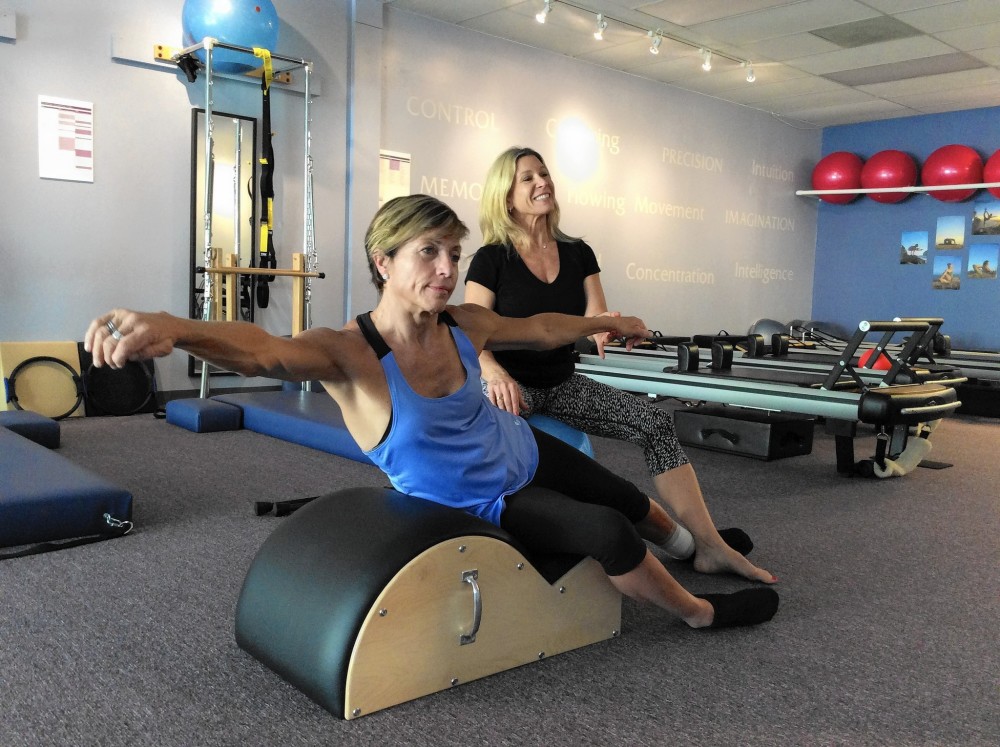By Susan Jacobson
Orlando Sentinel.
Dominique Lowe twirled around a shiny silver pole and struck a pose as her classmates at Allure Dance cheered her gravity-defying performance.
A search for fun drew her to the unconventional form of exercise. The camaraderie keeps her coming back.
“I hate working out,” said Lowe, 26, explaining why she chose the women-only pole-dancing and aerial-arts studio in College Park over a traditional gym. “Here, I don’t feel like I’m working out.”
In Central Florida and across the U.S., smaller “boutique” fitness studios like Allure have been multiplying in recent years.
The small clubs, which focus on a single activity, draw 42 percent of health-club clients, although most of those surveyed said they also belong to another club, according to a report about to be released by the International Health, Racquet & Sportsclub Association.
Members don’t get the swimming pools and rows of exercise machines they would at L.A. Fitness or YMCA, but they revel in specialized training in niches such as Pilates, barre, yoga, group cycling, boot camp, CrossFit, mixed martial arts and boxing.
“I like the personalization that Lew [her trainer] brings to every class,” said Jaclyn Smith, 27, who works out at Revitalize Life Fitness, an indoor boot camp in Altamonte Springs that also offers yoga. “He’s right there motivating and helping you, and that’s what you don’t get when you go to bigger classes.”
Analyst Stephen Tharrett said boutiques tend to attract Millennials, exercisers between 18 and 34 years old seeking a personal touch and a sense of community.
Amanda Breed is a case in point. She started working out at independently owned Barre Revolution in Waterford Lakes about a year ago.
“I feel like it’s a lot more comfortable, a lot more personal, a lot less intimidating,” said Breed, 29, a psychotherapist and mother of a toddler.
For entrepreneurs, boutiques require a far more modest investment than larger gyms. Lower overhead and the ability to rely on social-media marketing further help keep costs down, said Tharrett, whose company, Club Intel, prepared the report for the health and racquet association.
Most studios are independent, but Orangetheory Fitness and Pure Barre, which have locations in Central Florida, are two of the largest boutique franchises, and are growing.
While the giant chains must constantly sell to ensure a profit and offset the loss of members who drop out, smaller studios can thrive by concentrating on helping their customers reach their goals, Tharrett said.
Lew Bronstein, who owns Revitalize Life Fitness, said that’s why he doesn’t force his clients into long-term contracts.
“I don’t want to collect from someone who’s not using what we do,” said Bronstein, who also works as an auctioneer. “It’s more important to serve people who really are there for a change.”
Another defining characteristic of boutiques is the passion and presence of the owner, Tharrett said. At Tru Pilates and Yoga Studio in Altamonte Springs, for example, owner Tina Stathis has been a fitness enthusiast for most of her life.
“I love teaching people to be strong and empowered by working out,” said Stathis, 48, who was a bodybuilder at 16 and previously taught at large clubs. “I can’t imagine doing anything else.”
Last week, Stathis guided Delyn VanDyke, who suffered a spinal-cord injury when she was in a motorcycle crash in 2012, through a private training session. She was there every step of the way to correct VanDyke’s form and gently encourage her.
“She pushes me,” VanDyke, 52, said. “She doesn’t let me give up.”
While the country was enduring a recession, boutique fitness studios were booming, said Jessica Matthews, a senior advisor to the American Council on Exercise and an assistant professor of health and exercise science at Miramar College in San Diego.
Although boutique-studio memberships generally cost more — sometimes 50 percent to 100 percent more — devotees are willing to pay for specialized training with highly qualified instructors, Matthews said.
Tru Pilates and Yoga, for instance, charges $240 for 10 Pilates classes. An unlimited monthly membership at Allure Dance costs $129. Barre Revolution offers options including a 12-month automatic-payment contract for $100 a month. The companies’ single-class options range from $15 to $30, comparable to some larger health clubs’ monthly membership fees.
Like many owners, Elise Porter-Dean of Barre Revolution teaches many classes herself. A professional dancer for most of her life, she greets her clients by name and limits class enrollment to ensure everyone gets enough attention.
“They’re not just a number,” said Porter-Dean, 34, who maintains as second career as a Realtor. “We care about what they do and about their families.”
“Workaholic” was a word invoked time and again by owners of boutique studios. Among them is Koreen “KK” Hart. She teaches at the YMCA and L.A. Fitness and owns health-care marketing and fitness-studio management companies in addition to running Allure Dance, which also has a location near the University of Central Florida.
“I put my heart into it,” Hart, 30, said. “I put my passion into it. It never feels like work. I just love it.”














































































































































































































































































































































































